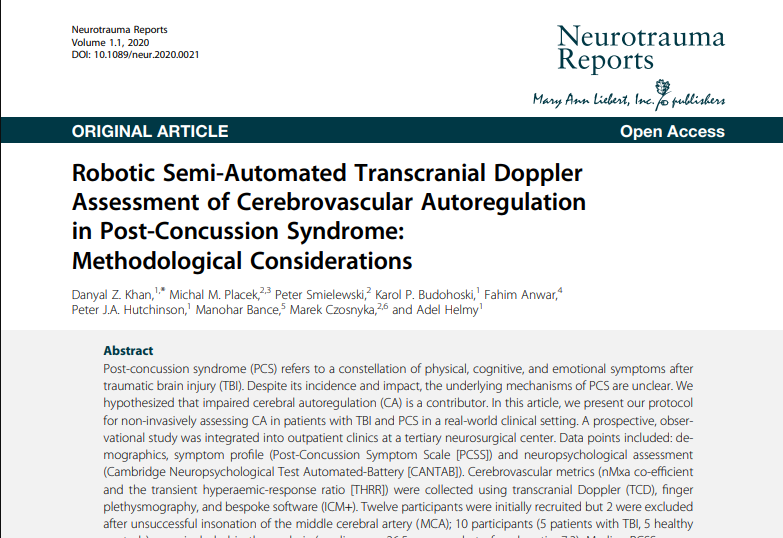Effect of Targeting mean Arteria pressure during cardiopulmonary bypass by monitoring cerebral autoregulation on postsurgical delirium among older patients
2020-06-15Charles H. Brown IV,MD, MHS; Karin J. Neufeld, MD, 2458
Read More
 Robotic Semi-Automated Transcranial Doppler Assessment of Cerebrovascular Autoregulation in Post-Concussion Syndrome: Methodological ConsiderationsRobotic Semi-Automated Transcranial Doppler Assessment of Cerebrovascular Autoregulation in Post-Concussion Syndrome: Methodological Considerations
Robotic Semi-Automated Transcranial Doppler Assessment of Cerebrovascular Autoregulation in Post-Concussion Syndrome: Methodological ConsiderationsRobotic Semi-Automated Transcranial Doppler Assessment of Cerebrovascular Autoregulation in Post-Concussion Syndrome: Methodological Considerations- Dynamic brain-body coupling of breath-bybreath O2-CO2 exchange ratio with resting state cerebral hemodynamic fluctuationsDynamic brain-body coupling of breath-bybreath O2-CO2 exchange ratio with resting state cerebral hemodynamic fluctuations
- Lower body negative pressure protects brain perfusion in aviation gravitational stress induced by push–pull manoeuvre
- Prospective Study on Noninvasive Asswssment of Intracranial pressure in Traumatic Brain-Injured PatientsProspective Study on Noninvasive Asswssment of Intracranial pressure in Traumatic Brain-Injured Patients
- A noninvasive estimation of cerebral perfusion pressureA noninvasive estimation of cerebral perfusion pressure using critical closing pressure.
- Adaptive Noninvasive Assessment of Intracranial Pressure and Cerebral AutoregulationAdaptive Noninvasive Assessment of Intracranial Pressure and Cerebral Autoregulation
- Control Autonomic e Vascular em pre-hipertensos com Historico Familiar de Hipertensao ArterialControl Autonomic e Vascular em pre-hipertensos com Historico Familiar de Hipertensao Arteria
